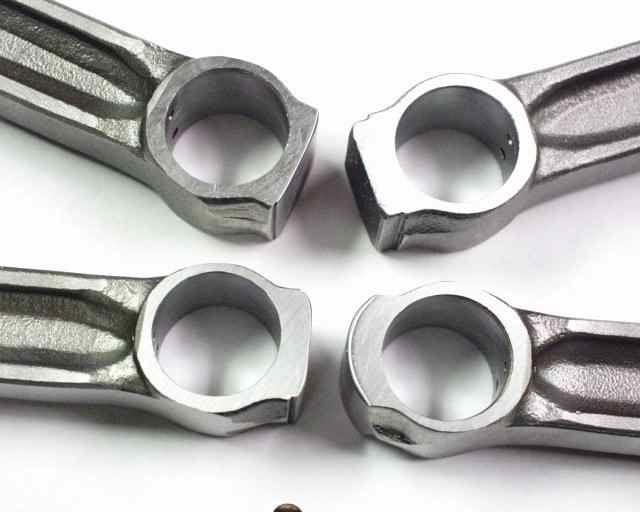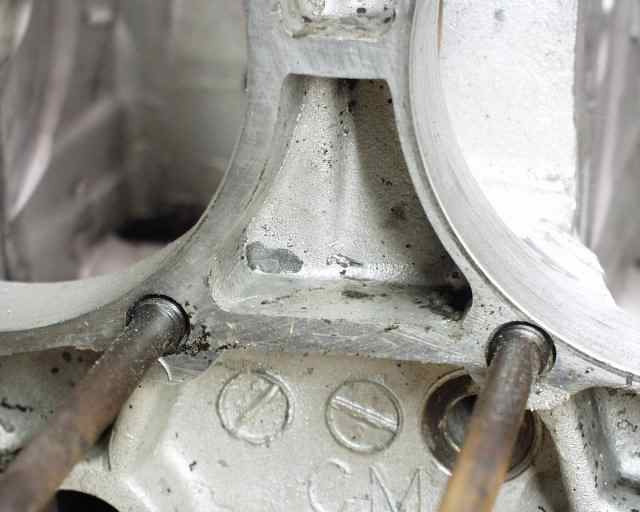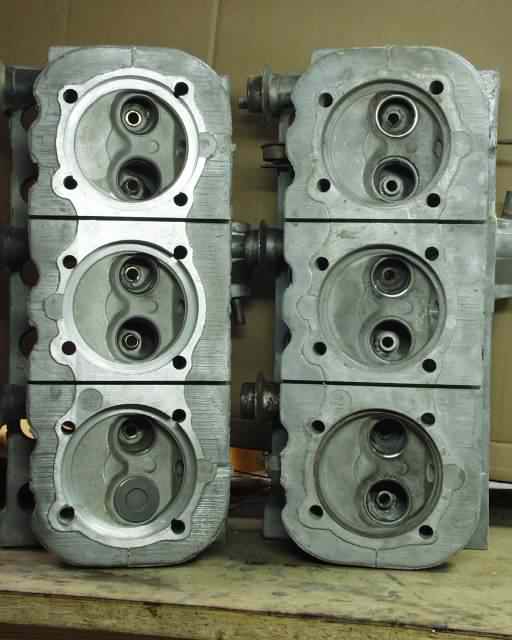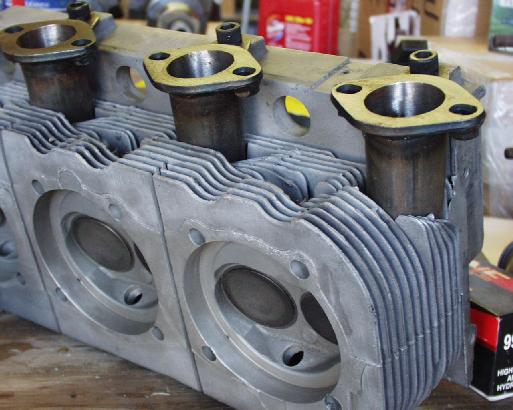Mark Langford's KR2S Corvair Engine
Corvair KR2S Engine
revised November 20, 2000
I decided to go with the 3100cc option because it yields 15% more power while saving weight over a stock Corvair .030" cylinder setup. The heads, case, and rods were sent to Bob Sutcliffe at SC Performance (909-593-4497) for the 3100cc "Mighty Mouse" treatment, whereby the heads and case were bored to accept 94mm VW Cima pistons and cylinders, bringing the displacement from 2.7 to 3.1 liters. The rods were also "straightened", magnafluxed, shot peened, resized, and bored on the small end for floating VW pins rather than pressed Corvair pins, and ARP rod bolts were installed.

I wondered about the "off-centerered" look of the small ends, which are bored to accept the larger diameter Mahle/Cima 94mm piston pins. Bob assured me that if you flip them over, they're dead concentric, and he was right. That just goes to show how bad the Chevy forgings were. This is part of the "straightening" operation.

I was also concerned about how close the studs were to the cylinder cutouts in the case. And some are closer than others. Again, Bob assured me that the problem is with the original case casting. Rather than pilot on the original cylinder bores, he uses dimensions from the factory drawings to determine where to bore the six cylinder holes. The cylinder head stud holes in the cylinders have plenty of clearance to allow them to fit properly. The resulting minimal material remaining between stud thread and cylinder spigot is why you can't Helicoil the Corvair case if you plan to go the 3100cc route.
This brings up another matter, which is head stud removal. The conventional wisdom is DON'T! Being a VW guy from way back, I promptly removed them all (by double nutting) just to get them out of the way to ship and bore for the 94mm cylinders. When I called Bob to discuss the shipment of the case to him, he told me to remove ONLY the ones that are corroded beyond hope or have stripped or missing threads. His machining process specifically provides for milling the case with the studs installed. This connection is so critical that there are several oversizes available for when you absolutely MUST replace one. Even then, it's best to heat the oven to 300F and freeze the stud, and loctite it when installing it. Upon hearing what Bob had to say about removing the studs, I found another engine and used this "new" case as the foundation for my engine.
While initially removing the head nuts do whatever it takes to keep the studs from turning. Vice grips on the stud will usually do the trick. If that fails, use a nut splitter (if you can get it in there) or drill two small holes in opposite edges of the nut and split the weakened nut with a chisel, being very careful not to screw up the threads on the stud. This sounds painful, but I did it on ALL of my top nuts, since they were so corroded. Lower nuts are usually not a problem, since they live in a bath of oil their whole lives.

Here's a view of a head (on the left) that's been bored for the VW 94's and a stocker on the right. You can see that the head stud holes leave practically no material between the stud holes and the cylinders, but the heads rest on the combustion chamber, so there's not a problem. Loss of strength here is not a big deal.

Although I'm not going this far, this is what Bob's exhaust port enhancement looks like. He removes the stock exhaust tubes and inserts these 1.5" tubes. Performance definitely improves on high revving 140 horse and turbo engines, but I'm not sure the price of admission will matter that much to me at 3600 rpm, AND they require a custom exhaust. Not that my airplane engine WON'T, but at least I could start with a set of aftermarket Corvair headers and hack from there if I keep the stock exhaust tubes, but I'll just weld up my own with U-bends from Magnum Force Racing. These particular heads are 140's. Notice the small amount of material between the valve seats, which is why 140's are famous for dropping seats. Compare the valve seat distance between this picture and the one above, which are 110 heads.
As Jimmy Buffet once said, "curiousity got the best of me" so I weighed my
94mm VW pistons and cylinders vs the stockers.
Bottom line is that the stockers are a total of 6.8 pounds heavier than the
big bores (for all six). But yours are bored out .030"? OK, you bored
stocker guys save 1.42 pounds there, so the Mighty Mouse still saves 5.38
pounds total! And then there's that aluminum that Bob Sutcliffe bored out
of the case and cylinders that's now in his recycle bin.
To find out more about what Bob Sutcliffe's SC Performance does when they do the Mighty Mouse job, see
SC Performance .
3100cc trial assembly
3100cc engine final assembly
Return to Mark Langford's KR2S Corvair engine



